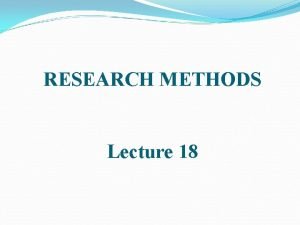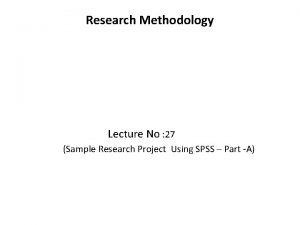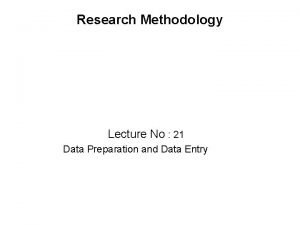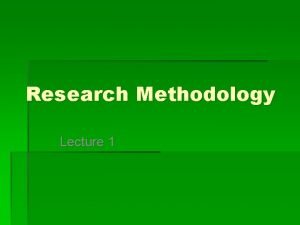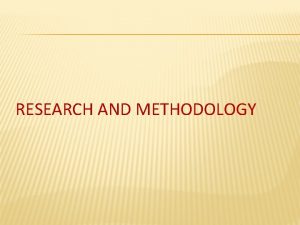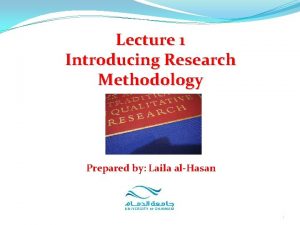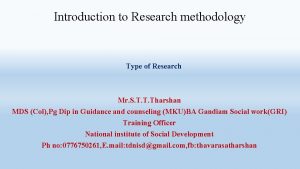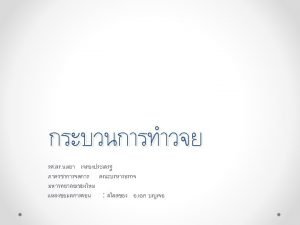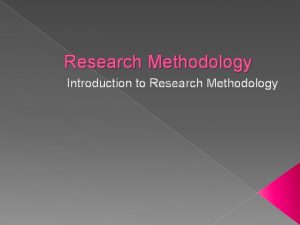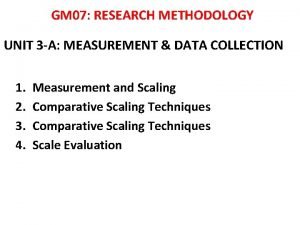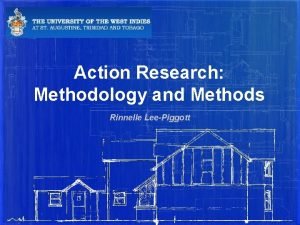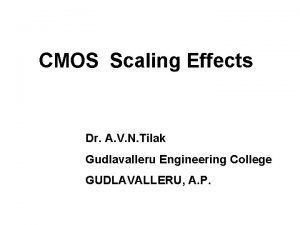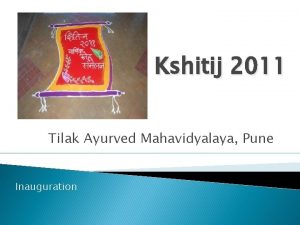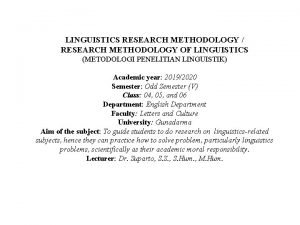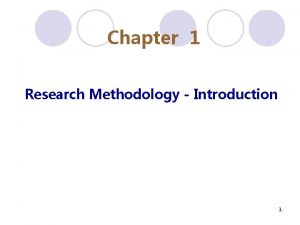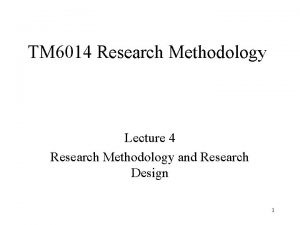Research Methodology Prof Tilak Kariyawasam What is Research



































- Slides: 35

Research Methodology Prof. Tilak Kariyawasam

What is Research. “Investigation or experimentation aimed at the discovery and interpretation of facts”. “The systematic investigation into and study of materials and sources in order to establish facts and reach new conclusions”. Research = Re – Search – Repeatedly searching. If you want to discover something not fathomable or not easily comprehend, you have to search it repeatedly. That is the exact meaning of the word research.

The Purpose of Research is a journey where we may discover what we anticipated through our investigation. We may have some hypothesis or imagination. We try to find out that hypothesis as a reality. We will try to say that it is not an imagination but it is a reality. That is a very purpose of a research. e. g. Satellite

The Benefit of Research Through research very important and very valuable things have been produced by wise people in the world. e. g. Electricity, Telephone, Radio, T. V. Aeroplane etc. , supply us enormous benefit. Not only that some medicine which were found by some medical researchers are very useful for people.

The Benefit of Researches On theoretical matters also more researches have been done. In Buddhism various Buddhist teachers were engaged in research activities. Therefore, they were able to form philosophical theories which were created philosophical traditions such as Sarvastivada, Sautrantika, Madhyamaka and Yogacara. These are four major philosophical traditions in Buddhism. These traditions were emerged due to good researches.

In Buddhism -Pali word for Research Buddhism has followed many researches from the very beginning. In fact, the Buddha was the primary researcher to find out the Path of Freedom (Vimutti Magga). Therefore, Buddhism encourages to use research from the beginning. The Pali word for Research is ‘Pariyesana’. Sanskrit ‘Paryesana’ English equivalent is given as “Search”. In Sinhala, Sri Lankan language, the word ‘Paryesana’ is

In Buddhism- Pali word for Research Used for academic research. Normally it is mentioned like ‘Paryesana for Ph. D. ’- ‘M. A. Paryesana’- “He is engaged in a Paryesana these days. ” This Pali word Pariyesana is mentioned in the Majjhima Nikaya (Middle Length Saying) in the Discourse called “The Discourse of Noble Search” (Ariya Pariyesana Sutta). Sutta No. 26.

Beauty of Research As it is with everything, with Research also has a beauty. This research will lead the researcher to a unknown destination. In this travel of research he will discover very valuable results, which he has never thought of. When they discover these new theories, it will lead them to enormous happiness. Some researchers will be thrilled with those discoveries and behave abnormally. e. g. Archimedes.

How to Proceed with a Research Academic researches are conducted to write a Thesis or a Dissertation. Thesis is for M. A. Degree or M. Phil. Degree. Dissertation is for Ph. D. Degree. One has to follow the University regulations to proceed in this type of research work to obtain those degrees of M. A. or M. Phil. or Ph. D.

Application Procedure When you decide to do a research work for a degree, you have to register in the necessary Department. For that you have to get an Application Form. Apart from your Name and Address, you have to mention your prequalifications to show your eligibility to follow the particular research programme. Then you have to write your intended topic of research.

Selecting Subject and the field Topic is a Key factor of a research. In order to select the topic one must first choose the subject for a research and select the field of that subject. One must undergo thorough study in his field to select a topic. When you thoroughly study your field of subject, you may come across some problems, some of the places where necessary to clarify more for readers to understand. some points need an analytical approach,

Selecting a topic Some points need more proofs. Those problems or those points and those places will be the research topics. The topic should be precise one. The topic should indicate the clear idea of what is going on in that research. In simple way “When read the topic the aim of the research should be comprehended easily. ”

Selecting a topic There are two ways of selecting a topic. 1. Selecting a topic with the consultation of the supervisor. 2. You as a researcher you can select the topic according to your own wishes. These both ways have advantages and disadvantages.

Formulating a Topic Must not select a wider topic. Must select a limited topic. e. g. : - “Critical Evaluation of Pali Sutta Piataka” - Topic with a wider range. e. g. : - “Crtitical Evaluation of Brahmajala Sutta of Digha Nikaya” – Topic with a Limited range.

Search for Sources In a research, it is very important to find the Original sources. In Buddhist studies one must find original sources and then secondary sources also should use for more information. Sources are more important in a research. All the facts necessary to complete the research will be drawn from sources. There are some topics difficult to find sources. e. g. “Whether the Buddha was blamed by people, because mostly youngsters/ ordained”

Must pay the attention to the time frame When engage in a research it is important to pay attention to the time factor. There is a time limit for a Research. For M. A. with Research. - 2 years. (Max. 3) For Ph. D. - 3 years. (Max. 5 Years) Therefore, it is very important to start with more prepared means must finalized in stipulated time.

Synopsis writing When the candidate decides a Topic for a Research and obtained an application form, he must handover the completed application form with a Synopsis. When candidate complete the application form he must mention his/her present academic qualifications. Mention for what is the Degree that he is applying. For M. A. or Ph. D.

What is a Synopsis? It is a comprehensive summery of your intended research project. It should be not longer than 4 -5 pages. Normally this synopsis have to handover with the application at the beginning of 1 st semester. In some Universities when you submit synopsis you must make a presentation also at least 10 -15 minutes at the end of 1 st semester.

What should be included in the Synopsis 1. Title 2. Introduction to the title 3. Importance of this research 4. Literature review 5. Methodology 6. Breakdown of chapters 7. Conclusion 8. Bibliography 9. Appendix

What should be included in the synopsis 1. Title 2. Introduction on the Title. 3. The importance of this research and why you have selected this particular topic. 4. If there any research done on the same topic or on the line of this topic those things must be mentioned and how you change your research from those works.

What should be included in the Synopsis 5. Methodology How you are doing this research. After thorough Study of original Pali sources and collecting materials compare with sub commentary details and so on. If it is a survey conducted in a particular area How the data collection, with a questionnaire and what aretype of people you are going to meet and so on.

What should be included in the Synopsis 6. Breakdown of chapters. Each chapter should be given a title of the chapter and explain with two or three sentences what are the matters you intended to discuss in those chapters. 7. Conclusion. 8. Bibliography. 9. Appendix

Registration Your application with the Synopsis if approved by the Academic Board after review the candidate will be virtually registered for the Research Degree Program. Then the Supervisor will be appointed by the Academic Board. Now the candidate is engaged in the Research according to the guidance given by the Supervisor.

Proceed in a Research When the candidate engage in research work he has to get an appointment to meet the supervisor. You have to meet the supervisor regularly. That means when the candidate finished subsection of one chapter or a chapter. He must hand over it to the supervisor for his advise. If you have a student card you have to get his signature each time you meet him.

Footnotes or endnotes • When you write something you must write footnotes or endnotes wherever necessary. If you are referring to a Book. There are two ways of giving reference. MLA type and APA Type. Bhattacharya, N. N. Buddhism in the History of Indian Ideas. Delhi: Manohar, 1995. Print.

Footnotes or Endnotes. Author’s surname first, then his first name, then the Title of the Book, Place of the publication, Publisher and the year. APA Type Bhattacharya, N. N. (1993). Buddhism in the History of Indian Ideas. Delhi, Manohar. Here the difference is the year of Publication comes just after the names and the place of publication mentions in shorten form e. g. New York = NY.

What are the components of the Thesis Title Page Declaration Dedication Acknowledgement Content Abstract 1 st Chapter – Introduction 2 nd Chaper - Literature Survey

What are the components of the Thesis 3 rd Chapter – Relevant to the Thesis 4 th chapter “ “ 5 th Chapter “ “ 6 th Chapter “ “ 7 th Chapter - Conclusion 8 th Bibliograpy 8 th Index

What are the components of the Thesis Title Page 1. Must include the Title of the Thesis 2. Name of the candidate and the Registration Number 3. For what Degree this submission is done. 4. Name of the Supervisor 5. Name of the University

What are the components of the Thesis Declaration Candidate and the supervisor both have to certify this Thesis is a research done by the candidate himself. Abstract This is the short summery of the study. Limit it to 150 -200

What are the components of the Thesis Introduction The comprehensive background to the study. You can explain the historical perspective for your study area. Literature Review Describe relevant previous studies in the field.

What are the components of the Thesis Conclusion Describe what really you have been aiming at this Thesis and what kind of new points and new theories you could have discovered and how your findings are different from the previous other studies. Bibliography You must include all the books, Articles and Magazines you used in this research in the Bibliography.

What are the components of thesis You must not included the sources you did not read or sources that are not pertinent to your study in the bibliography. In the bibliography authors names should be written in Alphabetical order. Bibliography can be divided into sub-sections such as: - 1. Original Sources. 2. Secondary Sources 3. Articles in the Journals 4. Book Reviews 5. Electronic References.

What are the components of the Thesis Index When you do a Thesis on the subject of Buddhist Studies, it is necessary to have index because of involvement of Pali and Sanskrit terms. Most important things to keep in Mind Efficient time management Avoid Plagiarism

Writing tips Always use complete sentences. Avoid excessive use of personal pronouns such as I, me, according to my view point. Margins: Leave 01 inch from all sides except left side. Left side 01 ½ inch should leave for binding. Font Size: - 12 pt (Times New Roman), Line Space: 1 ½ lines.
 Rudra sampradaya tilak
Rudra sampradaya tilak Lokmanya hospitals private limited
Lokmanya hospitals private limited Tala
Tala Tilak pasala
Tilak pasala Data gathering for quantitative research
Data gathering for quantitative research Objectives of research methodology
Objectives of research methodology Descriptive hypothesis
Descriptive hypothesis Objectives of research methodology
Objectives of research methodology Research methodology flow chart
Research methodology flow chart How to write methodology in research proposal
How to write methodology in research proposal Criteria of good measurement
Criteria of good measurement Example of dimension in research
Example of dimension in research Methods versus methodology
Methods versus methodology What is a schematic diagram in research
What is a schematic diagram in research Reviews data for consistencies.
Reviews data for consistencies. Research methodology lecture
Research methodology lecture Continuous variable example
Continuous variable example Design methodology meaning
Design methodology meaning Ohio office of criminal justice services
Ohio office of criminal justice services Define research methodology
Define research methodology Type of research methodology
Type of research methodology Research design flow chart
Research design flow chart Research procedure in methodology
Research procedure in methodology Difference of research and design
Difference of research and design Components of chapter 3 in research
Components of chapter 3 in research Types of research methodology
Types of research methodology Scree plot factor analysis
Scree plot factor analysis Plan of analysis in research proposal example
Plan of analysis in research proposal example Ocar structure
Ocar structure Confounded relationship in research methodology
Confounded relationship in research methodology Research methods notes kenya
Research methods notes kenya Midterm exam for applied research methods
Midterm exam for applied research methods Methology
Methology Constant sum scale
Constant sum scale Methodology in research
Methodology in research Define research design
Define research design










